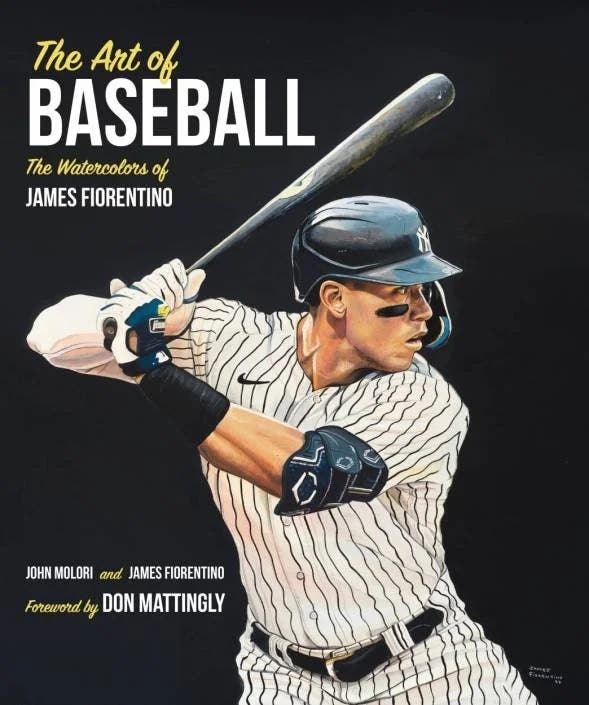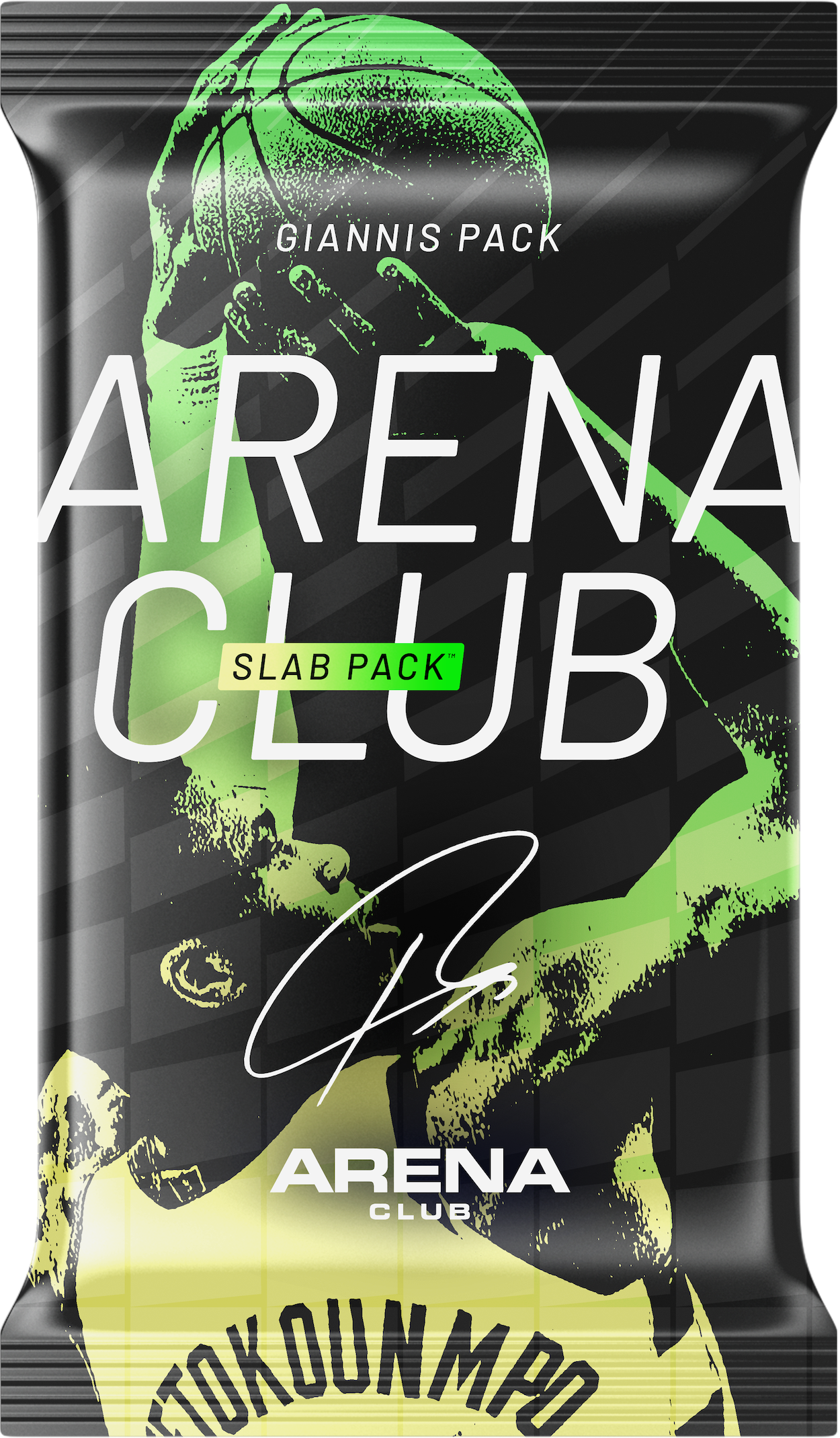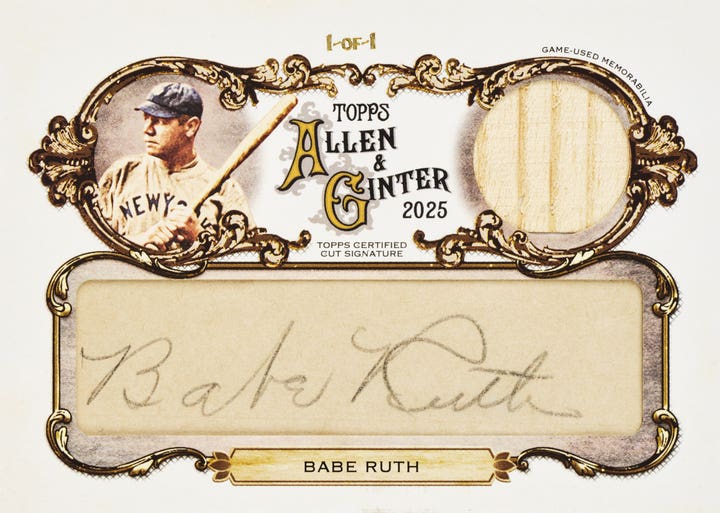News
Kansas City Municipal Stadium Artifacts Remain a Mystery
OK, stadia trivia fans, here’s today’s question: Which former MLB ballpark featured a petting zoo with various barnyard animals and a rabbit which delivered baseballs to the home plate umpire? If you guessed long-gone Kansas City Municipal Stadium, give yourself a Dodger Dog and a watered-down beer in your own personal souvenir commemorative stadium cup.
Today, of course, Kansas City, Mo., is home to one of the most beautiful parks in the land, Kauffman Stadium, which is home to the MLB Royals and is noted for its distinctive center field fountains. (Meanwhile, the NFL Chiefs play at their own place, Arrowhead Stadium, a football-only facility). But back in the day, KC Municipal was the home to four baseball clubs, as well as the AFL Chiefs of the Hank Stram era. Yet, today it is a footnote in sports lore, with collectibles, or frankly, any vestiges of its existence, a rarity indeed. But that’s never stopped us, has it?
KC Municipal’s opening came in 1923. Designed by the Osborn Engineering Co. (whose other project in 1923 was Yankee Stadium), its original capacity was only 16,000. Built upon a former frog pond and ash heap at 22nd Street and Brooklyn Avenue, it was originally called Muelebach Field, named for Beer and Hotel magnate George E. Muehlebach, who also owned the local minor league Kansas City Blues. As originally configured, it was 350 feet to both right and left field, and 450 feet to center (these dimensions would become a bone of contention later on, courtesy of one Charles O. Finley, whom we’ll discuss later) and featured a mostly covered single deck.
The Blues, who belonged to the American Association, were the prime tenants of Municipal Stadium from 1923-54, though their co-tenants, the Negro league Monarchs, were arguably more famous and featured such all-time greats as Satchel Paige, Buck O’Neil and Jackie Robinson.
The ballpark’s first brush with MLB status came in 1937, when the Yankees bought the Blues for their farm system and promptly renamed the place Ruppert Stadium in honor of the Bombers’ owner, Jacob Ruppert. This title would remain until 1943 when it was renamed Blues Stadium. During the Yankee years such future greats as Phil Rizzuto would pass through on their way to the majors. Other notable Blues players helped the club to the Junior World Series in 1929, including Joe Kuhel and Bill Wambsganss, best known for making an unassisted triple play in the 1920 World Series.
In November 1954 Arnold Johnson bought the Philadelphia A’s from Connie Mack and decided to move the venerable franchise to Kansas City (he’d purchased Blues Stadium the year before). However, to make his ballpark “major league” ready he would have to hustle. Thus began a construction project worthy of an episode on “Modern Marvels.” Considering how long it takes for anything to get built today, it deserves a retelling.
As Blues (now renamed Municipal) Stadium had fewer than 18,000 seats, a study was quickly done to see if the park’s foundation could support a second deck. Problem was, it couldn’t. What to do? Well, rebuild the stadium. But there were only three or so months until opening day. Johnson decided to go for it.
January saw the pouring of concrete for new footings. Then, through the sometimes sub-zero cold of the Kansas City winter, workers toiled feverishly, sometimes lashing themselves to the structure to keep from falling to their death. Incredibly, by opening day the 30,000-plus park had a covered second deck.
On opening day former President Harry S. Truman, a Missouri native for whom the current Royals/Chiefs complex is named, threw out the ceremonial first pitch, with Connie Mack and famous slugger Jimmie Foxx, as ties to the past, in attendance. Both of these gentlemen probably noticed immediately another tie to past history sitting in center field: the scoreboard, late of Braves Field in Boston, which Johnson had picked up for $100,000. The A’s defeated the Detroit Tigers, 8-2, on their way to a dismal sixth-place finish at 63-91.
The A’s of the late 1950s were pretty bad. In fact, it was snidely remarked that they were still a minor league affiliate of the Yankees, with seemingly lopsided trades between the two clubs repeatedly raising eyebrows and seemingly reinforcing that particular conspiracy theory.
After a last-place finish in 1956, the team decided to trade away any leftover Philadelphia A’s players to forge a new identity for the club. This proved to be disastrous, as stars like 1952 MVP pitcher Bobby Shantz, and later (1959) fan favorite Roger Maris were shipped to the Yankees for aging castoffs, including Hank Bauer (who would eventually become the A’s manager), Don Larsen, Norm Siebern and Marv Throneberry. (During this time the Monarchs, as would the rest of the Negro leagues in the post-Jackie Robinson era, passed into history, leaving the A’s as the sole baseball occupants.)
The year 1960 would begin Municipal Stadium’s most controversial and colorful era. Arnold Johnson died suddenly in March of that year, and it was questionable as to whether the franchise would go under. However, the American League owners approved the sale of the A’s to an enthusiastic, business-savvy tycoon named Charles O. Finley. Many would come to rue the day they let Charlie O. into the club. As would be his modus operandi throughout his ownership of the KC/Oakland A’s, Charlie was hands-on, hiring and firing managers with regularity and controlling the day-to-day operations of the club, often on a shoestring.
Then there was the animal thing. Charlie created a small zoo and picnic area behind the right field fence. Homers to right would send the critters scurrying. He then decided to replace the longtime team mascot, the white elephant, with a mule, appropriately dubbed “Charlie O.,” and added it to the menagerie. The rabbit previously mentioned was actually mechanical. Named “Harvey” after the movie rabbit of the same name from the 1950 film starring Jimmy Stewart, the rabbit would pop out of the ground near home plate, armed with baseballs for the umpire, while a compressed air machine blew dirt off the dish.
But Finely wasn’t done tinkering with Municipal Stadium. He tried to bring in the right field fence by erecting a 296-foot “Pennant Porch,” which included a small bleacher section, to take a swipe at the Yankees’ short right field dimensions. The American League made him remove it, so Finely tried again. This time he moved the fence to the minimum allowed distance of 325 feet and called it “One Half Pennant Porch.” To this he tried to add a canopy with an extension that reached almost 30 feet onto the field. Again, the not-amused AL bigwigs made him remove it.
Frustrated, Finley would have his PA announcer proclaim, “That would have been a home run at Yankee Stadium” for any ball hit beyond a chalk line he’d had painted 296 feet away from home plate.
But with the fences in, out or sideways, the team still struggled. In fact, with diminishing attendance a problem, Finley even tried to move the club to Dallas in ’62. Again, he was overruled by the AL. In another attempt to generate excitement, Finley changed the team colors from blue/white/red to the flashier green and yellow, figuring the advent of color TV would make his team stand out. That they did, though they were still horrible. (Finley would have the last laugh, of course, in the 1970s in Oakland when his “Mustache Gang” would form an early-decade dynasty, but there was no sense this would come to pass in those woeful early 1960s).
OK, fans, let’s take a break from Charlie and talk about some positive diversions of the 1960s in Municipal Stadium.
First and foremost, there were the AFL Kansas City Chiefs, who had begun life in 1960 as the Dallas Texans and moved to KC in ’62. With a wealthy, visionary owner (oil tycoon Lamar Hunt) and a supremely confident and capable head coach (Hank Stram) the Chiefs would become one of the signature franchises of the upstart AFL, developing a rabid following that turned Sunday afternoons in the fall into an almost college-like, rah-rah revival. Such stars as Len Dawson, Otis Taylor, Mike Garrett and Bobby Bell would lead the Chiefs to Super Bowl I in 1967 and ultimately, a crushing victory over the Vikings in the last true NFL-AFL Super Bowl in 1970.
In order to achieve football dimensions, temporary stands were erected in left field to expand the stadium’s capacity. Following the lead of other dual-purpose arenas (Milwakee County, Metropolitan, Tiger and Wrigley) both teams’ benches were on the north sideline, backed by temporary bleachers.
The other notable inhabitants – if only briefly, were the Beatles. Originally, the Fab Four had an off day during their 1964 tour, but Finley offered their manager, Brian Epstein, the then-tremendous sum of $150,000. The Liverpool Lads dutifully performed, though the crowd total came in under Finley’s expectations.
Back to the A’s. The next year, 1965, was another disaster (59-103), highlighted only by “Campy Campaneris Night,” vs. the California Angels where the lithe infielder-by-trade played one inning at each position, including pitcher. Unfortunately, a home-plate collision in the ninth sent Campy to the hospital for X-rays, and the game ended up going 13 innings, with the Halos prevailing, 5-3. In another legendary move, Finley activated the 60ish Satchel Paige, who 25 years earlier had hurled for the Monarchs in the same park, and saw him toss three scoreless innings of one-hit ball.
There were some bright spots here and there, including the drafting of the solid Rick Monday and the signing of hurlers Catfish Hunter and Blue Moon Odom. Another draftee, Reggie Jackson, would come aboard in ’66. That year also saw the addition of a 40-foot high screen in right field reminiscent of Ebbets Field. This was the suggestion of manager Alvin Dark to hopefully mask the A’s lack of pitching, and would be the last move of tinkering with Municipal’s dimensions during Finley’s tenure. (The Royals would lower them again later on).
However, a bombshell of sorts was dropped that same year when famed KC sportswriter Joe McGuff divulged that a sports complex, which would include a domed stadium for the A’s, was under consideration. The cost was estimated at $109,000,000. There were two possible sites, and the A’s park would be based on Houston’s Astrodome, then considered the Eighth Wonder of the World, at least by the sporting public. There would be 56,000 seats for baseball, 60,000 for the Chiefs. (A retractable roof option was dropped due to the projected high cost of construction and maintenance.)
By 1967, Finley had had it with Kansas City, and American League owners finally relented and allowed him to relocate. Yes, the team was still bad (62-99), but this was an improving club that would, as we all know, accomplish great things in Oakland. During that summer of ’67, Jackson County voters approved a $43-million bond issue for the sports complex that would provide separate (no domes) facilities for baseball and football. But Charlie wanted out, and Kansas City would go without professional baseball for the first time in ages.
The year 1969 brought new hope and a new AL expansion team – the Royals. (The Chiefs by this time were an AFL powerhouse). In August of that year, while the Royals and Chiefs still toiled at Municipal, contracts for construction of the Jackson County Sports Complex were signed, with both the Royals and Chiefs agreeing to 25-year leases. Plans called for the teams to move into their new digs for their respective 1972 seasons.
The final games at KC Municipal Stadium were notable for different reasons. For the Royals (a franchise that would hit its stride in the late 1970s led by such luminaries as George Brett, Frank White and hurler Paul Splittorff), it was an opportunity to invite back notable members of the Blues, Monarchs and Athletics. Among those who returned were Satchel Paige, Bob Cerv, Hank Bauer, Joe Kuhel and Buck O’Neil.
The Chiefs, on the other hand, played their final home game on Christmas night, 1971, a gut-wrenching, excitement-packed playoff loss against the Dolphins, who were on their way to the last undefeated season in NFL history. I remember watching that game and will never forget the heroics of Chiefs running back Ed Podolak, who staged one of the great individual performances of all time, in the NFL’s all-time longest game.
And so, after a long run, Kansas City Municipal Stadium was abandoned, to be torn down in 1976.
While perusing the stacks at the Hall of Fame last year, I found an article by Don Wade from the April 6, 1985, issue of the Kansas City Times which discussed the still vacant lot at 22nd Street and Brooklyn Avenue. Here are some passages:
“The mind has kept a record of long home runs hit onto Brooklyn Avenue or over the left field wall into Sam’s Parking Lot. Outfielders still glide across a lush green checkerboard, and infielders still shake the dirt from their gloves after fielding grounders. But now the grass is more zigzag than crisscross, the field more rectangular than diamond-shaped, and the imposing outfield walls are just so many yards of chain-link fence. Only a small, open-sided shelter covering garden supplies stands on the nearly 12-acre lot ... a kid taking a shortcut home from school might toss a rock over home plate or hurl a bottle over the right-field wall onto Brooklyn Avenue ... the crack of the bat replaced with the shatter of glass.”
Wade went on to explain that the land had been targeted for an industrial park, but that a “Community Garden” project was being given a try. The plan called for residents to be allowed to plant on 20-by-40-foot plots for a nominal fee. Groups of coworkers and friends could grow a garden together and then donate the produce to low-income families. However, it was noted that this was only a temporary solution.
The mayor at the time, Ilus W. Davis, commented that once the Royals and Chiefs left Municipal Stadium, people quickly became fascinated with their new parks and had little sentimentality for the old ballpark. There had also been quite a bit of vandalism, with vagrants even building fires in the dugouts.
Local people who were interviewed complained that the demise of Municipal accelerated the decay of an already crumbling neighborhood that surrounded the park. In the old days, some people in the area had managed to make a few extra bucks letting fans park their cars in their front yards. Others remembered the ballplayers parking on those same side streets and inviting local kids into the games with them.
The last bit of information I found at the Hall was an article from the Kansas City Star on April 7, 2000, which noted a ceremony in which an official historical marker was dedicated on the site. In addition to local dignitaries, the great Negro leaguer Buck O’Neil, wearing his Monarch colors, was there to unveil the marker.
As far as KC Municipal artifacts goes, you’d have to hire the “Cold Case” investigation team to find any. Not having a single KC piece in my collection, I contacted my friend Richie Aurigemma, whose personal collection and dealer website (www.CollectibleStadiumSeats.com) contain just about every stadium seat you can imagine. As I expected, he came through with a photo of a floor mount double seater. They seem somewhat similar to seats from Old Comiskey Park and Shibe Park, with curved backs and a rounded top slat. The color is light blue with a hint of green, with large white block numbers painted on.
Aurigemma believes there may have been free-standing American Seating curve back seats there as well. He added, “In all my years I don’t think I’ve seen more than a handful of the unrestored seats from KC Municipal, so putting a price on one would be difficult. From a rarity standpoint, it ranks extremely high. From a desirability standpoint, it ranks pretty low, as there aren’t too many KC Athletics fans around these days.”
I would love to hear from any collectors out there who own KC Municipal artifacts of any kind, or have any knowledge as to where its contents may have gone (besides the scrap heap). And if you do own a piece of the old ballpark, consider yourself fortunate, because you are keeping alive the memory of a classic American sporting venue.
Until next time, please stay seated.
(Collectors can write to Paul Ferrante at 23 Benedict Ave., Fairfield, CT 06825 or e-mail at baseballjourney@optimum.net)








